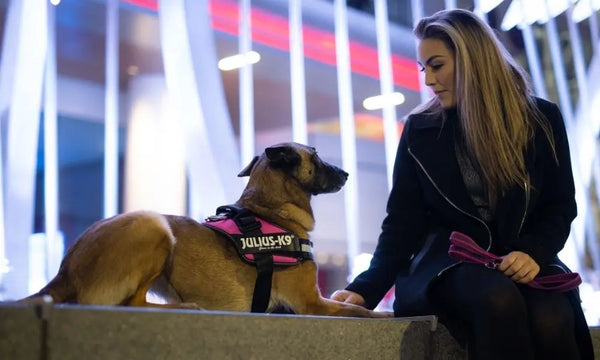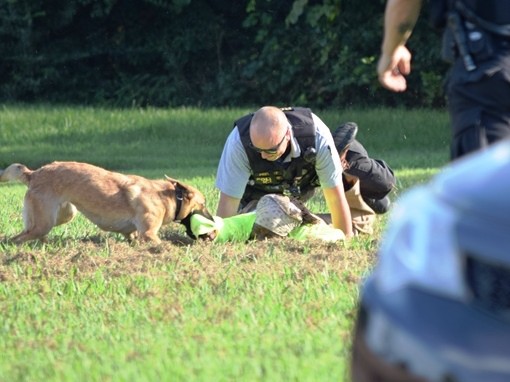Ohana K9 Academy: Providing positive and supportive training environments.
Essential Pet Dog Training Techniques for a Life Time of Etiquette
Effective pet dog training is fundamental to promoting a well-behaved companion that enriches our lives. Important techniques, such as positive support and constant command training, not only enhance obedience however also enhance the bond in between proprietor and pet dog. Understanding canine habits and utilizing socializing strategies can prevent potential issues before they arise. Nonetheless, the journey does not end with fundamental commands; attending to behavioral challenges requires a nuanced method that lots of overlook. What are the essential components that can change your training experience and ensure lasting results?
Recognizing Dog Habits

Furthermore, understanding the innate impulses and drives of a dog-- such as target drive, social communications, and territorial actions-- makes it possible for trainers to prepare for and manage certain actions. A pet with a solid victim drive may need different methods than one that is much more socially inclined.
In addition, very early socializing and direct exposure to different environments considerably influence a canine's actions and temperament. Favorable experiences throughout essential developmental durations can result in well-adjusted adult dogs, whereas unfavorable experiences might lead to stress and anxiety or aggressiveness.
Positive Support Techniques
Amongst the numerous dog training methods, favorable support methods stand out for their performance and capability to reinforce the bond between canine and fitness instructor (Ohana K9 Academy). This strategy emphasizes fulfilling preferred habits rather than penalizing undesirable ones, cultivating a more cooperative and trusting relationship
Positive reinforcement can take several types, consisting of treats, praise, playthings, or play. The trick is to offer immediate incentives when the pet dog displays the desired behavior, allowing them to make the link in between the action and the favorable result. If a canine rests on command, offering a reward right away reinforces that actions, making it much more likely to be repeated.
Uniformity is vital in positive support training. Trainers must utilize the very same cues and incentives to prevent perplexing the canine. In addition, differing the benefits can maintain the canine's passion and motivation, transitioning from constant treats to periodic praise or play as the dog masters the behavior.

Standard Command Training
Structure on the structure developed through positive support approaches, standard command training offers as an important step in establishing a well-mannered pet dog. This training commonly includes vital commands such as "rest," "stay," "come," and "down - Ohana K9 Academy." Each command plays an important role in fostering effective communication in between the pet and its proprietor, boosting the total bond
Start with short, concentrated sessions lasting no more than 5 to 10 minutes to maintain your pet's attention. Make use of high-value deals with as benefits, making sure the canine associates proper habits with favorable results.
Perseverance is critical; pets may require numerous repeatings to grasp commands fully. Slowly enhance the intricacy by introducing variations or read what he said interruptions when your pet accurately look at more info reacts. Regular method strengthens found out commands, strengthening them in your dog's habits repertoire. Eventually, standard command training not only promotes obedience but additionally enhances security and assists in enjoyable communications during walks and playtime, laying the groundwork for even more innovative training strategies in the future.
Socializing Methods
In the realm of pet training, socializing strategies are crucial for growing a well-adjusted and positive canine friend. Effective socializing includes subjecting your pet to a range of atmospheres, individuals, and other animals in a regulated and favorable fashion. The key objective is to help your pet dog develop a comfort degree with varied experiences, which can substantially decrease anxiety and anxiousness in unknown circumstances.
Begin socializing throughout the vital developmental home window of 3 to 14 weeks, when young puppies are most receptive to new experiences. Present your pet dog to different settings, such as parks, city areas, and homes with various other pets. Guarantee these experiences are favorable by making use of treats and appreciation to enhance etiquette.
Team training classes are an exceptional way to expose your canine to other dogs and people in a structured setting. This enables supervised interactions, helping your canine learn ideal social cues. Regular trips and playdates with courteous pets can better enhance social skills.
Dealing With Behavioral Issues
Resolving behavior problems in canines is an important element of training that requires a systematic technique and understanding of canine habits. Common problems such as barking, chewing, aggressiveness, and anxiousness can stem from numerous variables, consisting of absence of socializing, not enough exercise, or even clinical concerns.

Furthermore, establishing an organized routine that consists of normal exercise and psychological excitement can significantly ease behavior issues. For example, interactive playthings can keep a pet involved and lower destructive propensities. In situations of serious hostility or anxiousness, seeking advice from with a professional pet fitness instructor or a veterinary behaviorist may be essential.
Verdict
In verdict, effective canine training methods, consisting of positive support, standard command training, and socializing, are important for fostering great habits throughout a dog's life. Resolving behavioral concerns with a methodical technique not only enhances obedience but additionally enhances the bond in between pets and their proprietors. By implementing these approaches continually, pets can create into well-adjusted companions, efficient in browsing various settings and interactions with self-confidence and ease. Thus, developing a foundation for an unified relationship is necessary.